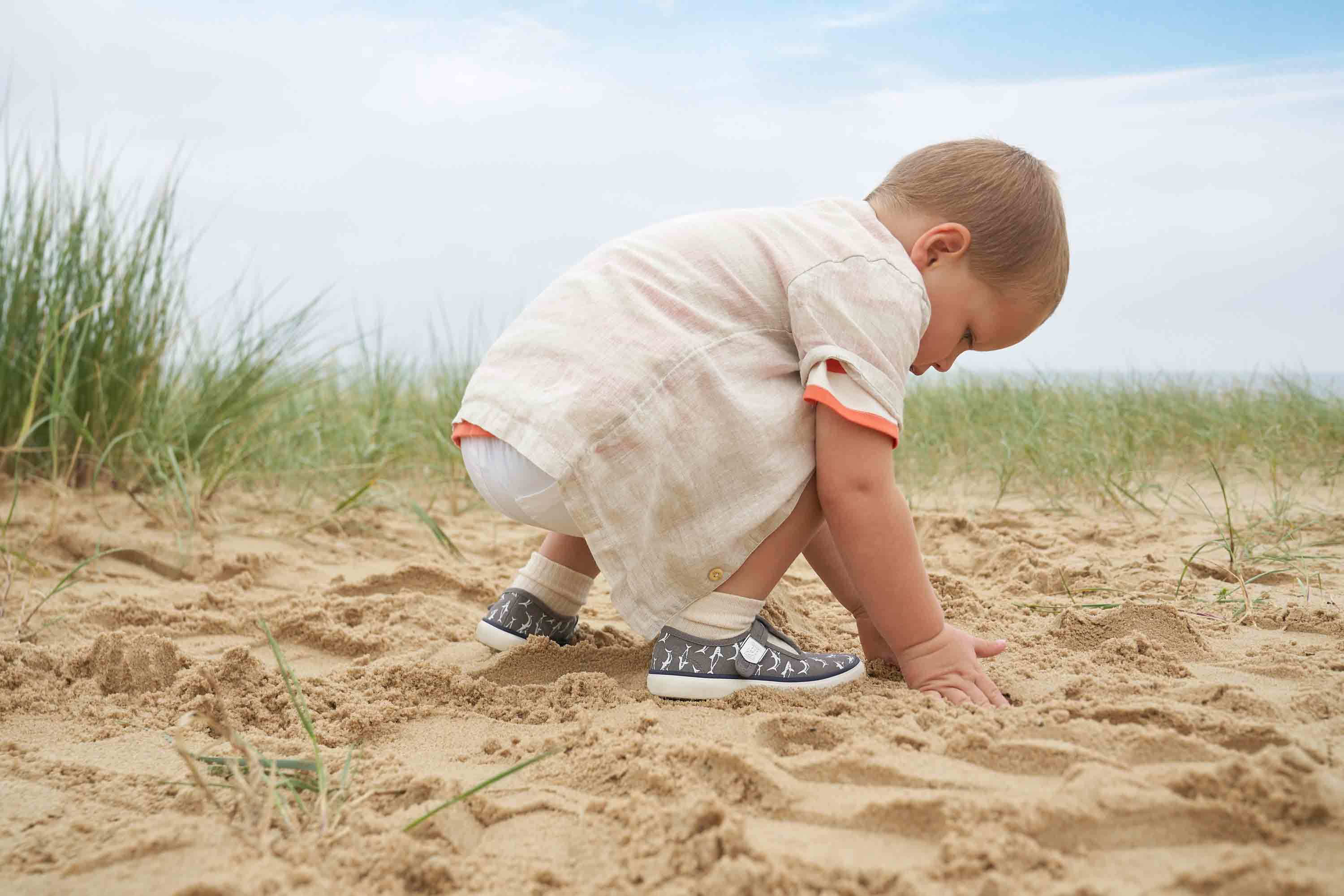
Canvas shoes are a staple for any spring/summer wardrobe, evoking thoughts of carefree days, trips out, ice cream treats and having lots of fun. Once the clocks go forward, and even with an early spring chill in the air, it’s exciting to look ahead to a warm weather wardrobe.
We create brightly coloured canvas styles to excite little imaginations, featuring hand-drawn motifs from our in-house designer. And we are proud that our new canvas for spring 2022 are all vegan friendly.
We are realistic about wear and tear and work very hard to ensure our shoes stand up to the rigorous hard work children put them through. Our canvas shoes are wash tested, testing for shrinkage and colour change. We also test the material for colour fastness, perspiration on linings and abrasion on the material and linings. Our canvas material is 100% cotton (accept when it includes a touch of glitter!) and our specified thread count is selected higher than industry standard, to enhance durability.
We make our canvas shoes machine washable at 30 degrees. This lower temperature is not only better for the environment, but it protects the full integrity of our shoes. We are confident our canvas shoes, with their vulcanised rubber soles, can withstand a machine wash up to six times before you might notice any colour loss or shrinkage.
However shoes inevitably get mucky so here is some general advice on how to clean specific stains from our canvas shoes to keep them looking like new for longer.
Grass stains are a very common occurrence with inquisitive active kids wanting to get the most out of the spring/summer months. This method to remove grass stains is quick and simple.
Our Start-Rite Cleaning Mousse is an effective and easy to use pump spray mousse designed to remove dirt and marks from our canvas shoes. It refreshes the colour of old and tired looking shoes to get them looking fresh and clean ready for any occasion.
How to use:

The best way to tackle stains is to protect your shoes from the start, with our Start-Rite Waterproof Protector Spray. It repels water, mud, and oil and used weekly you will protect your shoes from staining and requiring lots of cleaning down the line.
How to use:
Frequent application is required for optimum results i.e. weekly.
We know first walkers can be wobbly and all children can be super speedy on their feet so accidents can happen. Cuts can spot blood onto canvas shoes, and blood will quickly stain a dark brown colour. So how to get them scrubbed up looking like new again?
TIP: Always try to treat blood stains as soon as possible to give yourself the best chance of removing the stain without potentially damaging the canvas and pattern.
Our Start-Rite Express Whitener easily and quickly restores colour to white soles that have become dull or yellowed over time. The liquid formula with sponge top applicator is designed to be simple and easy to use on all white-coloured leather and textile products.
How to use:
Allow to dry for 15 minutes and apply further coats if the soles require additional whitening.
Remember to clean shoes regularly to prevent build-up of dirt or tough stains. Read our How to Clean School Shoes blog to see how to keep our Start-Rite School Shoes in top condition.
Please note it’s always advisable to test these methods on a small area of the shoe first and stain treatment is made at the owner’s risk.
Author: Click Consult, published 06-04-2022.